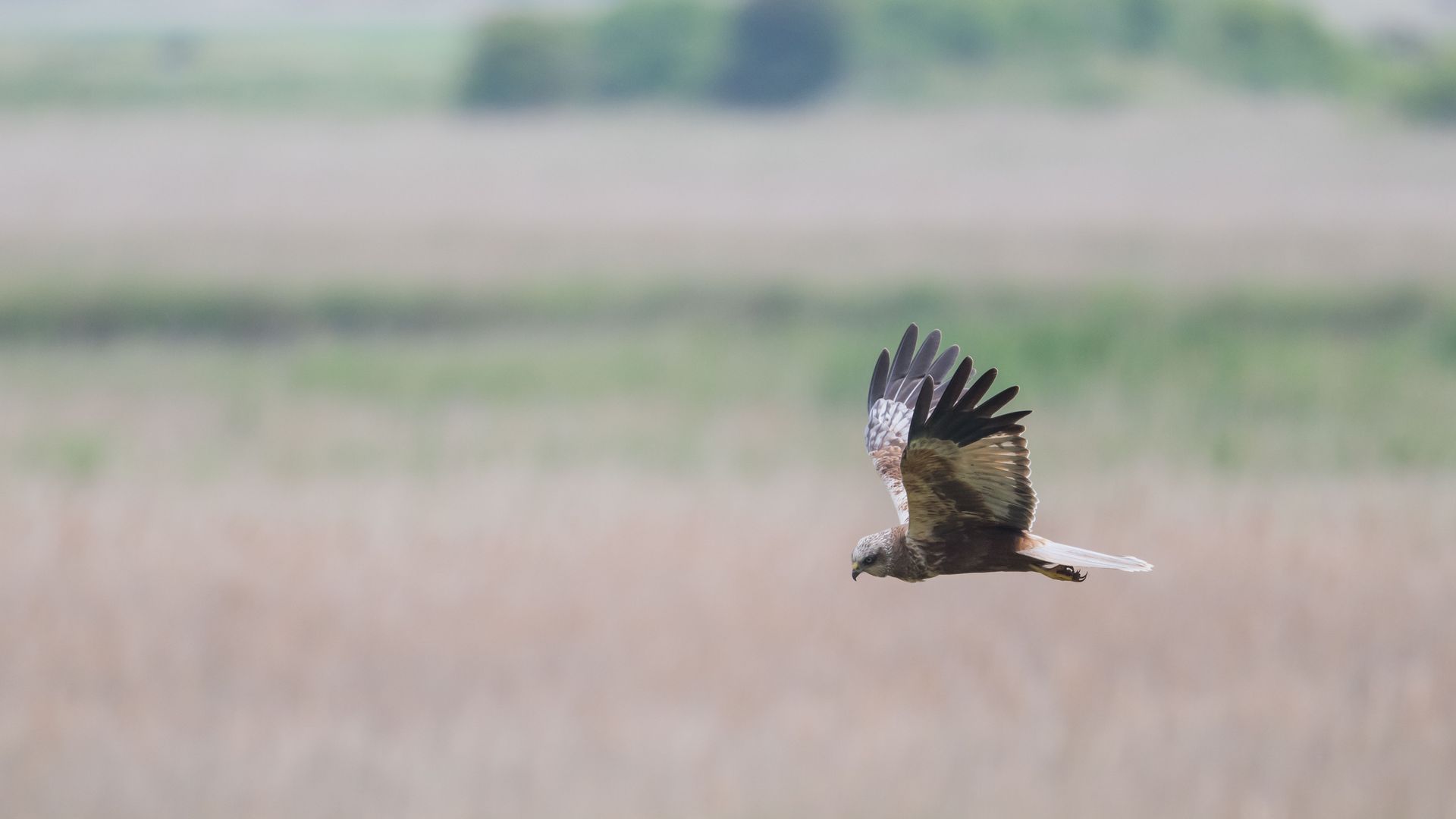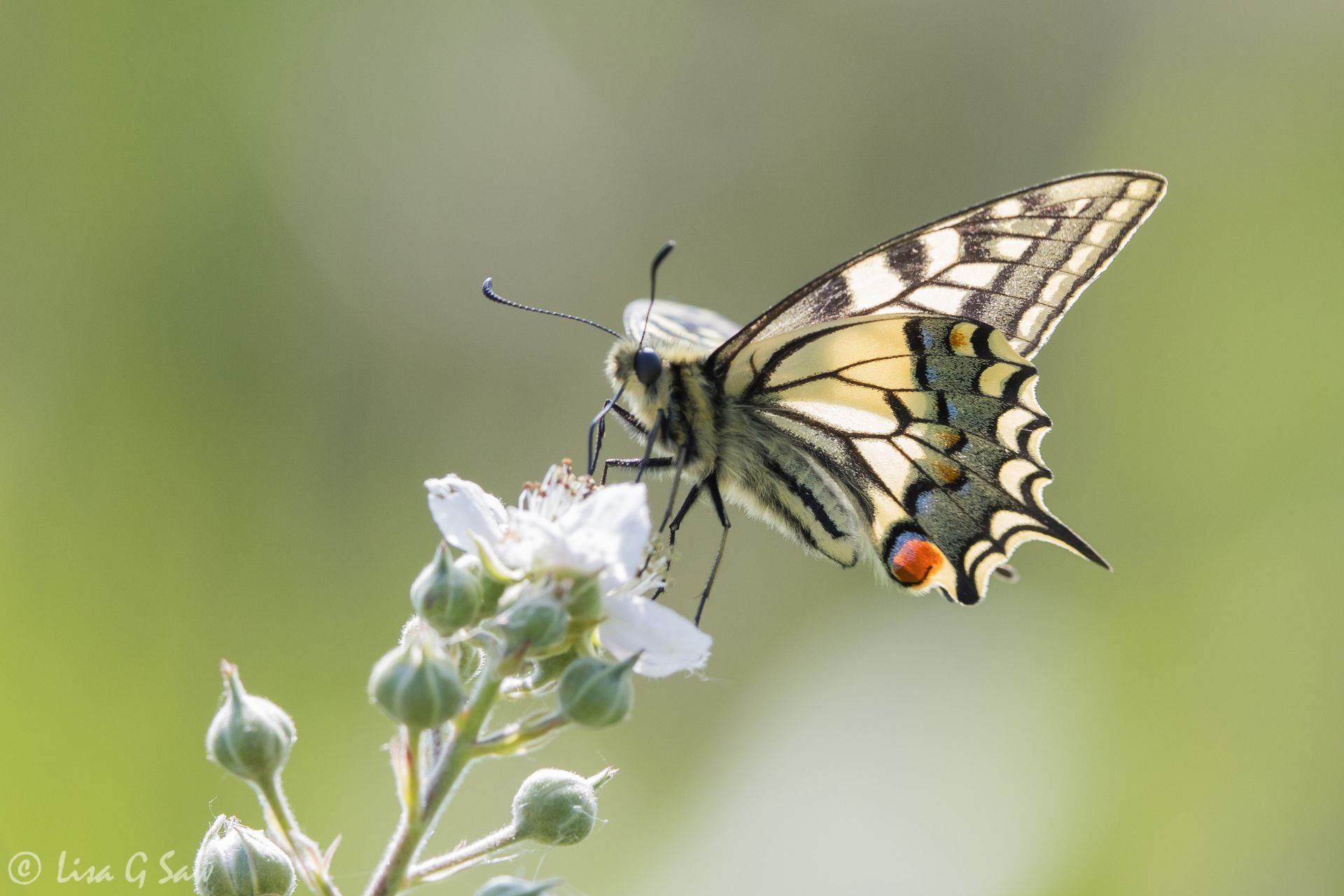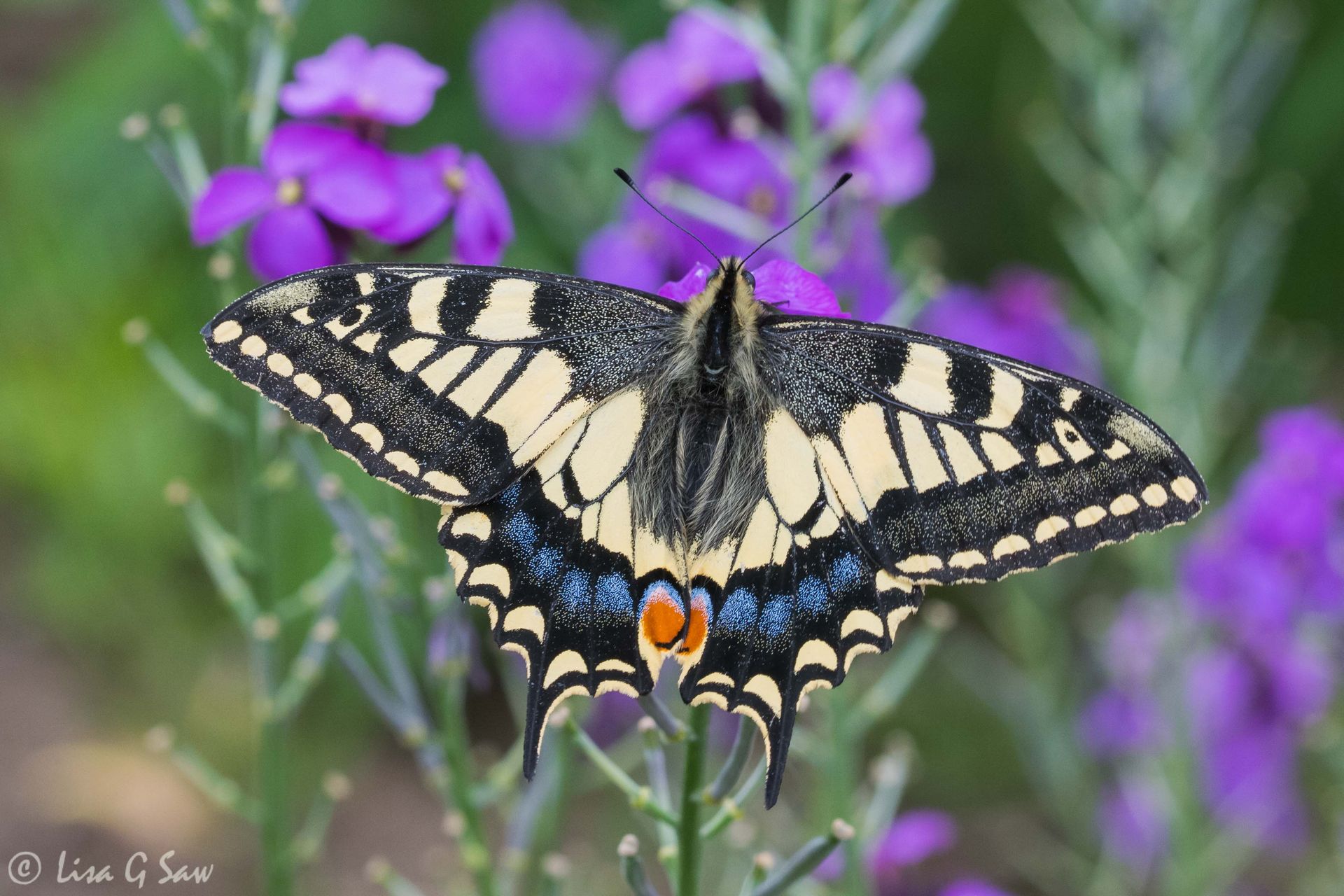Spring In Fort William
May 2024
This is the second post about my extended holiday up north earlier this year with my partner Bob. Our main focus during our first week of the holiday, whilst being based in Fort William, was looking for the Chequered Skipper butterfly, a species new to me. But, there were lots of other wildlife delights during that week.
We left home on the Sunday of the late May Bank Holiday and drove up to Keswick in the Lake District for an overnight stop. Although we had hoped to fit in a butterfly foray in the late afternoon, that wasn't to be and instead we walked around the town and on to Derwent Water nearby. In the afternoon, lots of people were walking along the footpaths, or relaxing on the grass or by the water's edge. But later, when we returned after dinner, there were far fewer people. We enjoyed a lovely peaceful evening stroll and watched a probable Goosander gliding along the water, occasioanlly diving down for food. By this time, the light had improved. The sun was catching the tops of the clouds, reflected nicely in the water. There was a light breeze that caused a gentle rippling of the water that was very calming.
When we made our way back into town, we walked along one of the narrow streets and some Swifts flew overhead quite close to us. It was in that playful manner, calling to each other - virtually squeaking with delight it seemed. I've never really heard this before, or at least been aware of it. We stopped a few times to appreciate the sound and watched with pleasure as they performed their aerial display. I think Bob was even more thrilled than me, reminiscing of days gone by when Swift numbers were far more numerous back home.
The next day we drove on to Fort William, which overlooks Loch Linnhe. We were staying in a luxury pod overlooking the loch, which was stunning. Ironically, we were on the same piece of land where I'd stayed many years before, only I hadn't realised it until we arrived, because the cottage I'd stayed in had been demolished and a new building stood in its place.
As mentioned in my first post, that first evening we went to Glen Loy, looking for the Chequered Skipper. What I didn't mention is how I forgot to apply some insect repellent on my face. Big mistake! Even though I was wearing a hat, the midges found the bare skin and particularly seemed to be drawn to my forehead. I had over 20 bites on it! It looked like I was suffering from measles. With the skin feeling warm and itchy, it wasn't a very pleasant experience and it took several days for the redness to go down!
On that first evening, after finding two Chequered Skippers, I spotted a roosting female Green-veined White. Bob pointed out how the markings on the veins are more pronounced up in Scotland.
The following day I found one again in the same area - it's entirely possible it was the same one. This time, it's wings were open so I could appreciate the upperside and how much darker the veins were on top as well as on the underwing. I've also shared a second open wing photo of a spring female taken in Sussex, to show the north-south contrast that Bob mentioned. These are also more darkly veined than the males and also the second summer brood of females. I never realised before there could be such variety across broods within the same species.
Aside from more Chequred Skipper action on this full day at Glen Loy, we spotted some Small Pearl Bordered Fritillaries. When their wings are open, they do stand out in the lushious tall green grass, but you don't see them easily at a distance, as they're often perched down low. I was just lucky on this occasion. I was tracking this beauty as it dropped down into the grass. I approached really slowly, so as not to spook it.
Soon after spotting the small pearl, my eyes were drawn to a black and white moth flying around. It was extremely flighty. Bob was able to identify it as an Argent and Sable Moth. We followed it quite some way, but it was able to travel a lot quicker than us. It was quite a challenge keeping up with it on uneven terrain and through the boggy grass. After several failed attempts to photograph it, I was pleased to at least have one half decent shot.
Later that morning, we were walking back alongside the road, Bob on one side and me on the other, closer to the river. We were looking for anything of interest really and nothing in particular. Suddenly, I spotted something big partially hidden amongst the grass. I wasn't sure what I was looking at. It looked like a very large bee, but I could see wings too. My first thought was that it was a bee with a butterfly or moth in its mouth. When I moved in closer, I realised it was just one creature, a really large looking bee with wings like a moth. Bob came over and knew exactly what it was. In fact, he mentioned there was a species he was hoping to see and I'd just found it for him! What luck! It was a Narrow-bordered Bee Hawk-moth (Hemaris tityus). What a stunner! Although the Chequered Skipper had been my main target of the week, Bob felt this was the find of the week as it's a nationally scarce species.
We had a forced break in the middle of the day, when heavy rain descended. We hurried back to the car and moved off to a different spot further along the road where some passers-by had told us earlier they'd seen more Chequered Skippers and a Whinchat. As it was about 1pm, we happily stayed in the car to eat our lunch and sit out the rain. When it eventually stopped about an hour later, we could venture out again. There was no sign of the Whinchat, which wasn't that surprising, but we did find a couple of Chequered Skippers.
Rather than give up on the area altogether, we returned to where we had been exploring in the morning to take more photos. Gradually we worked our way back towards the bridge and beyond it, following the River Loy further. Of course, in Scotland it would be referred to as a burn, which I like because it's used to describe both a large stream or a small river and I'm not sure I can always tell the difference! This seemed particuarly apt for the shallow water beside us.
On the other side of the bridge, there was a lot of bracken near the edge of the burn - some almost at shoulder height. Very slowly we walked alongside it. All of a sudden, I stopped. To my left, only a few feet away from me, was a gorgeous Small Pearl Bordered Fritillary, with its wings closed up. This is the best way to distinguish it from the Pearl Bordered Fritillary (PBF). You can clearly see there are black chevrons below the 'pearls' along the edge of the hindwing (red in the PBF), plus there are more 'pearls' in the midde of the hindwing (only 2 in PBF).
When its wings were open I could see it was a female (by the shape of the abdomen - it's longer and thinner in the male). It's also possible to appreciate how the dark edges of the forewing are more joined together (more separate with the PBF).
After stopping to photograph this one for a while, I thought how lovely it would be to see one on the bluebells, like I'd had earlier that day with the Chequered Skippers. I hadn't walked much further on, when one was doing exactly that! Excellent! It was a great way to end the day. Despite the cloudy and wet weather, we were thrilled with all that we saw and had a great day out.
After a short walk along Neptune's Staircase, and a brief spell of rain, we headed to Allt Mhuic Butterfly Reserve on the north shore of Loch Arkaig. We didn't see many people along the drive, except for a handful when we passed Eas Chia-Aig Waterfalls. We stopped only briefly so I could take a photo of this beautiful little spot.
At first, I was focused more on the Chequered Skippers at Allt Mhuic, however, there were some other insects of interest. We saw more Small Pearl Bordered Fritillaries and another elusive Argent and Sable moth. There were also some dragonflies on the wing in the area right near the car park, including a Four-spotted Chaser and this rather impressive Golden-ringed Dragonfly (female). I'd not seen one before, so I was really pleased. My interest in these creatures is increasing as I see new species. I can see a future quest might just be trying to see all UK species of dragonfly and damselfly, after I've seen all the UK butterfly species.
Male dragonflies have pincer-like appendages at the base of the abdomen and the Golden-ringed Dragonfly males also have a swollen 'waisted' lower section. The female of the species has a single longer ovipositor as can be seen here.
Later, when we ventured further uphill into the nature reserve I spotted another Golden-ringed Dragonfly just beside the path. I was able to take a photo from a different perspective, looking down on it, whilst it was hanging on to the vegetation. It was another female.
There were Heath Spotted Orchids higher up in the nature reserve and a few patrolling dragonflies, but fewer butterflies. We did see a few different species of moth: a Common Heath, Silver Hook and a very small orange moth, which we later identified as an Amber Hook-wing moth. Bob noticed a stunning Cranefly, but I missed that. There was also a Red-legged Shieldbug final instar nymph - basically, not a mature adult yet and it's legs weren't red!
Back down near the base we spent more time experimenting, waiting for the sunshine to appear. I was particularly struck by the beautiful colour of this fly. It looks like a Green Bottle Fly (Lucilia species). There was also a lovely Green Tiger Beetle holding territory on a large rock, moving around periodically, but staying faithful to the site.
On our final full day staying in Fort William, we headed south to Glasdrum Wood National Nature Reserve. Aside from being a hot spot for Chequered Skippers, there were some other lovely insects to photograph, including the White-spotted Sable moth (Anania Funebris). We'd already spent quite a bit of time photographing this species in Kent a few weeks prior to the trip. It's another flighty moth that likes to hide underneath leaves and doesn't usually stay out in the open much. I didn't take too many photos, as they weren't as fresh as the ones we'd seen in Kent, but it's a gorgeous little moth and another nationally scarce species.
Sometimes we didn't have to look too far for interesting insects! This Two-banded Longhorn Beetle (Rhagium bifasciatum) was found resting in the eyepiece of Bob's binoculars, whilst they were dangling from his neck.
The Chequered Skippers on the whole were few and far between and not very fresh at this site, but the Small Pearl Bordered Fritillaries were both numerous and looking very fresh and vibrant. Once again, I spotted one on a bracken frond looking my way.
Aside from having some lovely open wing shots, I really wanted to get an underside open wing photo. Mostly they were landing on leaves or the bracken. But eventually, after several hours of exploring the site, we finally spotted one on a blade of grass with its wings outstretched. It was crawling up the grass and didn't stay in the same position for long. I didn't have time to get in closer and focus properly, but I still love this photo, as you can fully appreciate the underwing pattern on both wings. Lovely!
Once you've seen one Small Pearl Bordered Fritillary in lots of different positions and on differing vegetation, as a photographer, I naturally wanted to see two together. With the numbers being so good at this site, it didn't take long before that happened. In the first photo you can really notice the difference in colour between the two butterflies. The one on the right is much brighter and fresher looking (female). The one on the left is a male trying to get the attention of the female, however, it didn't work on this occasion.
In the second photo, both look quite bright and fresh, but I think these two are both males nectaring on the same source. Of course, what I really wanted to see were two mating.
...and it happened! Bob spotted this pair low down, but just beside the path. What luck!
As the day progressed, the butterfly gifts just kept arriving. Having photographed lots by this point, I was now starting to experiment some more with videoing. So, when we came across a Chequered Skipper and a Small Pearl Bordered Fritillary nectaring on the same flower, I was thrilled! Even though the Small Pearl Bordered Fritillary is small, you can see just how much smaller the Chequered Skipper is. The latter is quite fresh looking too, and most likely a female, though it's a little hard to tell.
I thought seeing two together was good, but three was even better! Though naturally, it wasn't easy to capture an image with them all posed nicely facing the same way! I wasn't that lucky! I've shared two photos here, so you can see how one of the Small Pearl Bordered Fritillaries flew in to join the other two.
I didn't think the day could get any better, but nature had one more ace up its sleeve. As we were driving back towards Fort William, a Pine Marten crossed the road right in front of us, in broad daylight, carrying something in its mouth. Bob instinctively slowed down. Both of us were agape and stunned into silence as we watched it swiftly leap and bound across the road from the right and then disappear behind someone's house on the left. No doubt, it had some young hiding in the undergrowth nearby that it was going to feed. It was a magical moment etched forever in our minds. What an end to our stay up in Fort William.
Our first week of the holiday had far exceeded our expectations. Admittedly, having seen the weather forecast ahead of the trip, I did set off with low expectations. But, even though it was cooler, windier and wetter than the warmth of the south, we had some amazingly wonderful wildlife sightings. It goes to show you don't need sunny warm weather to see butterflies. It might be a little harder work to find them, but they're far less flighty when the sun isn't out. What I will add, is that our wellies and waterproofs were worn most of the week. They were only a last minute addition to our packing, so that was fortuitous! Whilst the midges were an issue this week, we didn't have any more problems with them for the rest of the holiday - that might be because it was too cold and windy for them! Even our tick count was very low with only one each by the time we left, after our last day at Glasdrum Wood. That was despite being all tucked in mind! But, only two was not bad going for us!
The next post in the series is
Black Guillemots in Oban.



